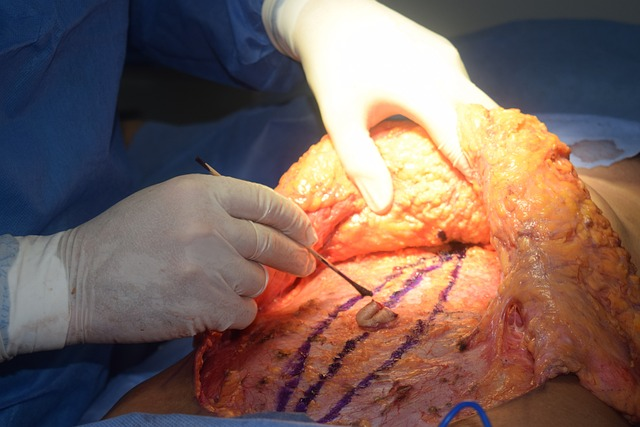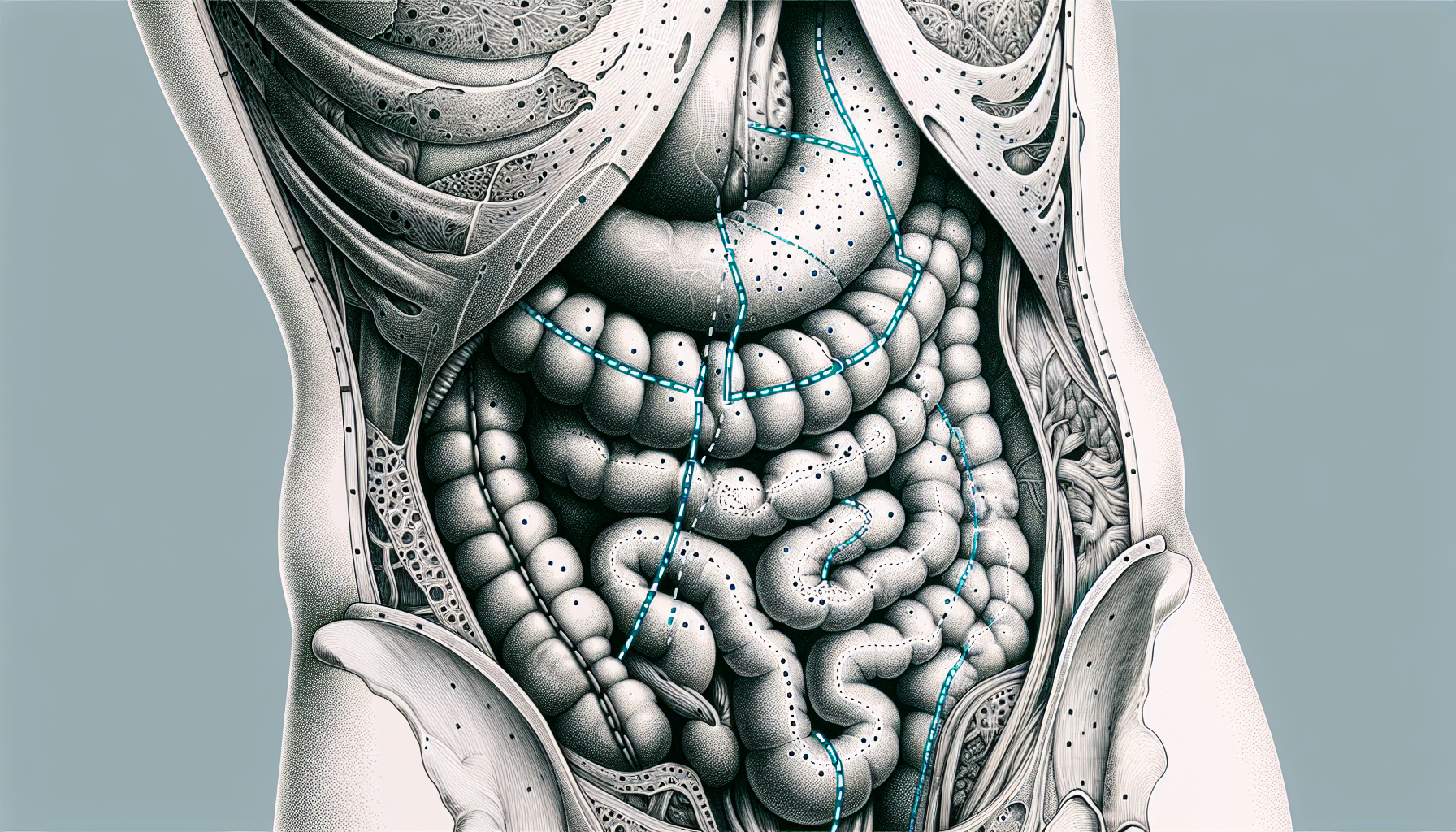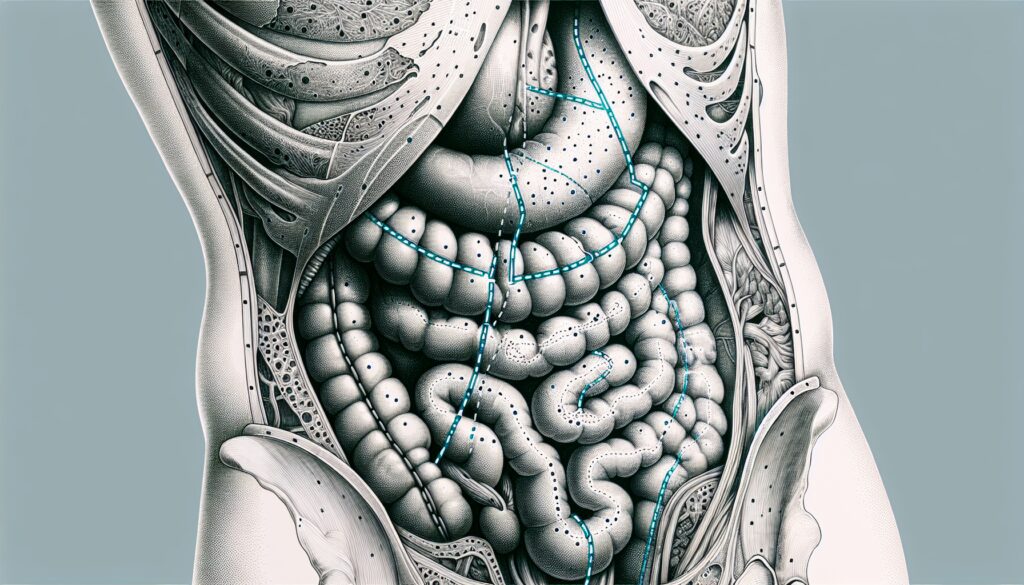What is a tummy tuck? In medical terms, it’s known as abdominoplasty, but in reality, it’s a surgical solution for those seeking a firmer, smoother abdomen. A tummy tuck removes excess skin and fat and tightens the muscles in the abdominal wall, often providing a boost in self-confidence. Ideal for individuals with loose skin after pregnancy or significant weight loss, this procedure has both cosmetic and functional benefits. Our guide will walk you through everything you need to know about tummy tucks without overwhelming you with information — perfect for helping you decide if it’s the right choice for you.
TL:DR
- A tummy tuck, or abdominoplasty, is a surgical procedure that involves removing excess skin and fat, and tightening abdominal muscles. It can improve body image and include the integration of scars from previous surgeries like C-sections.
- There are different types of tummy tuck procedures (full and mini) depending on the extent of surgery needed, with the process generally involving a pubic incision, removal of skin, and muscle tightening to achieve a toned abdomen.
- Ideal candidates for a tummy tuck should be near their goal weight, have stable weight for at least 12 months, and understand that it is not a weight loss method but a body contouring procedure.
Defining the Tummy Tuck

Known formally as abdominoplasty, a tummy tuck is much more than just a surgical procedure. It’s a life-altering decision that can help individuals achieve a more toned and slimmer abdominal profile, boosting self-confidence and body image. The process involves the surgical removal of loose skin and fat, coupled with the tightening of weak fascia – the connective tissue in the abdominal area.
While the tummy tuck is often considered a cosmetic procedure, its impact goes beyond just aesthetics. The reshaping and tightening of the abdomen also integrate previous scars, such as those from C-sections, into the tummy tuck scar, giving your confidence an extra boost.
When coupled with a healthy lifestyle and stable weight, the results of a tummy tuck can be long-lasting, leading to a flatter, firmer abdomen that harmonizes with your body type.
The Goal of Abdominoplasty
The primary purpose of a tummy tuck is to:
- Sculpt a more toned, flatter abdomen
- Remove excess skin and fat, particularly in the lower abdomen below the belly button, which can include stretch marks
- Achieve a firmer abdominal contour that aligns harmoniously with an individual’s body type and weight.
This transformative operation does more than just reshape your physique, it also changes the way you perceive yourself. By tackling issues that typically compromise the aesthetic appeal of the abdomen, a tummy tuck allows you to relish and accept your body entirely.
Types of Tummy Tucks
Abdominoplasty is not a one-size-fits-all procedure. There are two main types of tummy tucks: full and mini. A full tummy tuck involves a ‘hip to hip’ incision and addresses excess skin and fat across the entire abdominal area. It’s ideal for individuals who have undergone significant weight loss or multiple pregnancies.
On the other hand, a mini tummy tuck focuses on the area below the belly button, without addressing the upper abdomen. It involves a smaller incision and is best for individuals with good skin and muscle tone in their upper abdomen. The choice between a mini and a full tummy tuck boils down to the patient’s aesthetic goals, the degree of muscle separation, and the amount of excess skin to be addressed.
Anatomy of a Tummy Tuck Procedure

Despite often being simplified in dialogue, a typical tummy tuck entails a succession of meticulously performed steps. It begins with a horizontal incision placed between the pubic hairline and belly button, with the length and shape determined by the amount of excess skin. Once the abdominal skin is lifted, the surgeon proceeds to surgically repair the weakened abdominal muscles.
In the process of removing excess skin, a full tummy tuck may involve a second incision made around the navel to address upper abdominal skin. The upper abdominal skin is then pulled down, the excess trimmed off, and the remaining skin sutured back together.
The surgery concludes with the belly button being brought to the surface and sutured into its new position, and the incisions closed using sutures, skin adhesives, tapes, or clips.
The Incision and Removal of Excess Skin
The tummy tuck procedure involves the following steps:
- An incision is made along the bikini line, ensuring maximum concealment.
- Excess skin is carefully removed.
- The remaining skin is lifted and trimmed.
- The muscles are repaired if necessary.
- The skin is sutured back together.
In a full tummy tuck, to address excess skin in the upper abdomen, an additional incision is made, through which the upper abdominal skin is pulled down, the excess trimmed off, and the remaining skin sutured back together. This careful process is what helps achieve the much-desired flat and firm abdomen.
Tightening the Abdominal Wall
A firmer, flatter abdomen is a significant goal of a tummy tuck, where the tightening of the abdominal wall has a pivotal role. During the procedure, weakened abdominal muscles are repaired, and the connective tissue, or fascia, is typically tightened with sutures.
In some instances, advanced techniques such as muscle transposition and mesh reinforcement may be utilized for abdominal wall reconstruction. Furthermore, the use of progressive tension sutures can eliminate the need for post-surgery drains, which helps in managing excess fluid.
This correction and tightening of the abdominal wall can also benefit those who have a condition called diastasis recti, where the abdominal muscles have separated, often due to multiple pregnancies.
Who Is an Ideal Candidate for a Tummy Tuck?
While a tummy tuck is a potent means for body transformation, it is not suitable for all. Ideal candidates should:
- Have a clear understanding that a tummy tuck is not a substitute for weight loss, but rather, a procedure designed to remove small pockets of excess fat and skin.
- Be at or near their goal weight.
- Have maintained a stable weight for at least 12 months to ensure the best outcomes.
Good candidates for a tummy tuck are those with excess skin due to weight fluctuations, pregnancy, or aging, and those with weak lower abdominal walls that create a bulge. Understanding and preparing for the recovery process, including the initial use of prescription pain medication and modified sleeping positions, is also vital for anyone considering a tummy tuck.
Preparing for Your Tummy Tuck Surgery

Adequate preparation is fundamental to ensuring a successful tummy tuck. It’s recommended to start preparing at least six months in advance by:
- Improving your diet and exercise routine to reach an ideal weight and good physical health, as these factors contribute to a safer surgery and faster recovery.
- Consulting with your surgeon to create a preoperative nutrition plan. Such a plan typically includes a diet rich in vitamins A and C, selenium, manganese, and omega-3 fatty acids.
- Staying hydrated and eating well-balanced meals can enhance your body’s ability to heal and recover.
Additionally, lifestyle changes like quitting smoking and limiting alcohol consumption several months before the tummy tuck procedure are vital, as these habits can negatively impact healing and infection resistance.
Consultation with a Plastic Surgeon
Beginning your tummy tuck journey involves:
- Researching and consulting with board-certified plastic surgeons experienced in tummy tucks.
- Scheduling consultations well in advance, as top-rated plastic surgeons often book out 3 to 4 months ahead.
- Openly discussing your goals, expectations, and any concerns with your plastic surgeon during these consultations.
It’s essential to ensure that the recommendations provided by the plastic surgeon align with your vision for the procedure, confirming their understanding of your desired outcomes. This open communication can greatly enhance your confidence and comfort level as you approach your surgery date.
Pre-Operative Requirements
There are several pre-operative requirements that you’ll need to meet in the lead-up to your tummy tuck. At least two weeks before surgery, stop smoking to improve blood flow and healing, as smoking can slow down the healing process and increase the risk of tissue damage.
You’ll also need to avoid aspirin, anti-inflammatory drugs, herbal supplements, and supplements that interfere with blood clotting to reduce the risk of bleeding. In terms of diet, it’s recommended to adopt a diet consisting of well-balanced meals and reduce intake of carbohydrates, processed foods, and foods that can cause bloating, inflammation, or constipation.
Lastly, ensure you have a support system in place to help with transportation and at-home care post-surgery and prepare recovery supplies as suggested by the surgeon.
The Recovery Journey Post-Tummy Tuck

The process to achieve a flatter, firmer abdomen extends beyond the surgery, with recovery being a critical component. After the tummy tuck, you may be prescribed pain medication to manage discomfort, with rest and limited movement being paramount for recovery. You’ll also be encouraged to walk moderately soon after the surgery to promote circulation but should avoid strenuous activities for several weeks.
Full recovery from a tummy tuck takes six to eight weeks, during which time you should sleep on your backs and avoid strenuous activities, including sex. Drainage tubes are often placed at the incision site to prevent fluid buildup and are usually removed within one to two weeks post-surgery.
Post-surgical diet also plays a pivotal role in recovery, with a diet rich in protein and fiber, along with staying hydrated by drinking at least 64 ounces of water daily, supporting muscle, tissue, and skin repair, preventing constipation, and contributing to better recovery and weight stability.
Immediate Post-Op Care
The first few days after your tummy tuck are critical in setting the stage for a smooth recovery. Pain management strategies, which may include prescription opioids, will be provided to help you manage discomfort, and guidelines will be given to avoid putting pressure on incision sites, such as not sleeping on the abdomen and using a recliner during the initial weeks of recovery.
An abdominal support garment is also recommended to be worn for about six weeks post-surgery to aid in the healing process. Diet-wise, you’ll be advised to start with clear liquids and transition to softer foods to support recovery.
Measures to prevent deep vein thrombosis (DVT) include:
- wearing compression stockings
- periodic walking
- leg elevation
- isometric calf exercises
- for high-risk patients, potentially using blood thinners under physician guidance.
Long-Term Healing and Scarring
While the immediate post-op care is crucial to kickstart healing, long-term healing is equally important for ensuring the success of your tummy tuck. This includes the gradual improvement in scarring and sensation that comes as part of the recovery process.
Changes in skin sensation or numbness in the abdominal area or upper thighs may result from a tummy tuck. However, this numbness often diminishes over time as recovery progresses. Following your plastic surgeon’s guidelines is essential for optimal recovery and can affect the improvement of skin sensation.
Enhancing Results and Maintaining Outcomes
The path to a flatter, firmer abdomen extends beyond the recovery phase. Maintaining the results of your tummy tuck is an ongoing commitment that involves a healthy lifestyle, including:
- Avoiding tobacco
- Limiting alcohol consumption
- Following a balanced diet that includes lean proteins, fruits, vegetables, and whole grains to support healing and maintain results.
Staying hydrated and reducing intake of processed foods can further help in maintaining the results of your tummy tuck. Besides diet, regular exercise is crucial in sustaining the results of a tummy tuck over the long term.
The Role of Diet and Exercise
A balanced diet and regular exercise are key to preserving the results of a tummy tuck and enhancing healing. Adhering to dietary restrictions post-tummy tuck can help minimize unnecessary inflammation and improve long-term healing. These restrictions include:
- Cutting out alcohol
- Cutting out caffeine
- Cutting out smoking
- Cutting out high-sodium foods
Regular physical activity after a tummy tuck is essential for promoting better blood circulation, which is crucial for healing and maintaining skin elasticity. Some recommended activities include:
- Walking
- Light jogging
- Swimming
- Cycling
- Yoga or Pilates
In addition, strength training that targets the core muscles can also be beneficial in sustaining the abdominal wall tightening achieved through the tummy tuck surgery.
Importance of Weight Management
Consistent weight management is critical for the longevity of tummy tuck results. Significant weight fluctuations can stretch the skin and compromise the surgical results, so it’s crucial to maintain a stable weight post-procedure.
Significant weight loss after the procedure can diminish the appearance of a tummy tuck, so it’s important to have a stable weight beforehand. This underlines the importance of weight management both before and after the tummy tuck, which can greatly enhance your overall satisfaction with the results.
Potential Risks and How to Mitigate Them
As with all surgical procedures, a tummy tuck has potential hazards such as:
- Poor wound healing
- Unanticipated scarring
- Tissue damage
- Seroma, which is fluid buildup under the skin
- Increased risk of deep vein thrombosis
However, risks can be minimized by discontinuing hormone treatments and avoiding smoking prior to and following surgery.
Understanding Possible Complications
Grasping the potential complications empowers patients to make informed choices and ready themselves for possible risks. Some potential complications of the procedure include:
- Seroma
- Poor wound healing
- Unexpected scarring
- Tissue damage
- Changes in skin sensation
Your body mass index (BMI) can also play a critical role in the outcomes, with higher BMIs linked to greater risks of complications. Thus, managing patient nutrition, smoking cessation, and the careful selection of mesh materials can facilitate optimal outcomes. If you have concerns about your healing process, it is vital to promptly contact your provider or plastic surgeon.
Planning for Safety and Success
Guaranteeing the safety and efficacy of a tummy tuck requires choosing a competent, board-certified plastic surgeon and adhering to their directives for pre and post-operative care. A plastic surgeon should be board-certified by the American Board of Plastic Surgery (ABPS) or in Canada by the Royal College of Physicians and Surgeons of Canada to ensure proper training and credentials.
When selecting a plastic surgeon for aesthetic plastic surgery, it’s important to confirm they are recognized by the American Board of Medical Specialties, as ‘cosmetic surgery’ is not officially recognized as its own board specialty. Reputable plastic surgeons should always perform surgery in accredited, state-licensed, or Medicare-certified surgical facilities to ensure a safe and sterile environment.
Continuous medical education focused on patient safety is mandatory each year for plastic surgeons with ASPS membership to maintain their certification and stay updated on the latest practices.
Summary
A tummy tuck is more than just a surgical procedure. It’s a commitment to healthier living, a journey towards greater self-confidence, and a transformative step towards a body that feels truly your own. While the process may seem daunting, with the right preparation, a qualified plastic surgeon, and a clear understanding of the procedure, risks, and recovery, you can navigate this journey with confidence. Remember, at the core of every tummy tuck story is a person’s desire for an enhanced quality of life and a better sense of self – a goal worth striving for.
Frequently Asked Questions
How long do tummy tucks last?
The results of a tummy tuck should be permanent, but significant weight changes can alter the appearance over time.
What exactly does a tummy tuck do?
A tummy tuck, or abdominoplasty, tightens loose muscles and removes excess fat and skin from the abdomen, usually recommended after diet and exercise have been tried (Wikipedia).
Who should not get a tummy tuck?
People with undiagnosed health issues or unmanaged conditions like high blood pressure or diabetes should prioritize managing their health before considering a tummy tuck.
How painful is a tummy tuck?
A tummy tuck can be initially fatiguing and result in moderate pain for several days, but this discomfort will gradually lessen as you focus on rest and healing.
What’s the difference between tummy tuck and Panniculectomy?
The main difference between a tummy tuck and a panniculectomy is that a tummy tuck involves tightening the abdominal muscles and removing excess fat, skin, and tissue, while a panniculectomy is specifically performed to remove a pannus, a large flap of skin.

